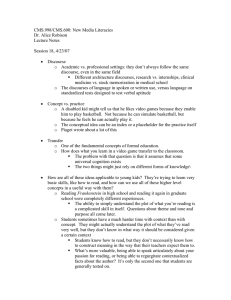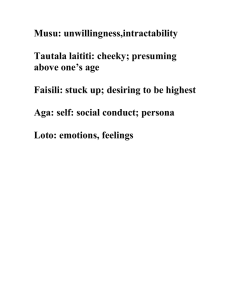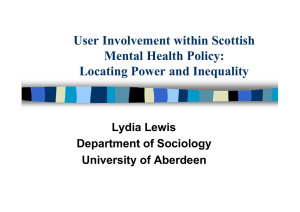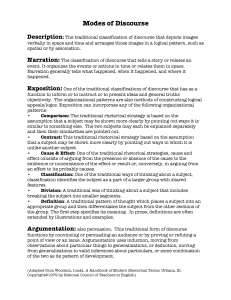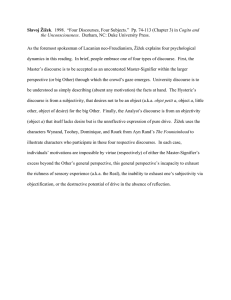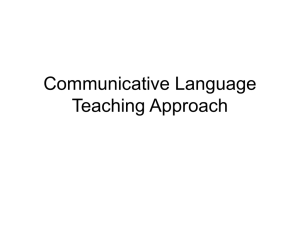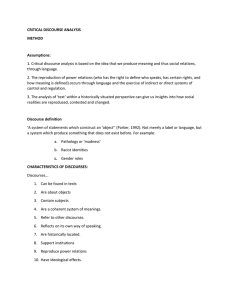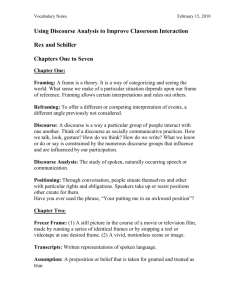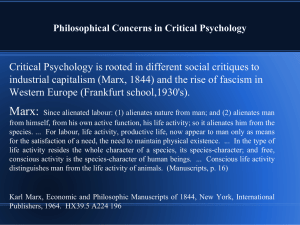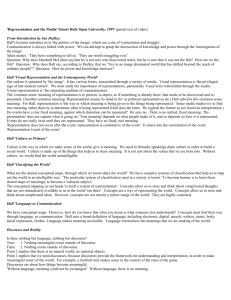English stylistics
advertisement
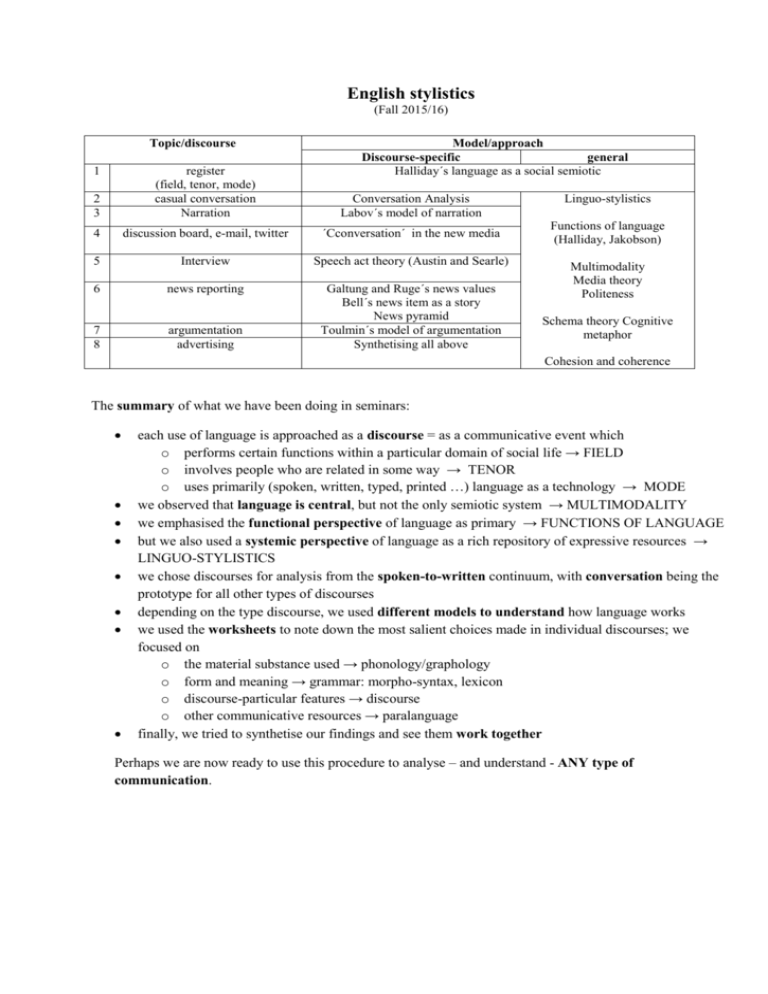
English stylistics (Fall 2015/16) Topic/discourse 1 Model/approach Discourse-specific general Halliday´s language as a social semiotic 2 3 register (field, tenor, mode) casual conversation Narration Conversation Analysis Labov´s model of narration 4 discussion board, e-mail, twitter ´Cconversation´ in the new media 5 Interview Speech act theory (Austin and Searle) 6 news reporting 7 8 argumentation advertising Galtung and Ruge´s news values Bell´s news item as a story News pyramid Toulmin´s model of argumentation Synthetising all above Linguo-stylistics Functions of language (Halliday, Jakobson) Multimodality Media theory Politeness Schema theory Cognitive metaphor Cohesion and coherence The summary of what we have been doing in seminars: each use of language is approached as a discourse = as a communicative event which o performs certain functions within a particular domain of social life → FIELD o involves people who are related in some way → TENOR o uses primarily (spoken, written, typed, printed …) language as a technology → MODE we observed that language is central, but not the only semiotic system → MULTIMODALITY we emphasised the functional perspective of language as primary → FUNCTIONS OF LANGUAGE but we also used a systemic perspective of language as a rich repository of expressive resources → LINGUO-STYLISTICS we chose discourses for analysis from the spoken-to-written continuum, with conversation being the prototype for all other types of discourses depending on the type discourse, we used different models to understand how language works we used the worksheets to note down the most salient choices made in individual discourses; we focused on o the material substance used → phonology/graphology o form and meaning → grammar: morpho-syntax, lexicon o discourse-particular features → discourse o other communicative resources → paralanguage finally, we tried to synthetise our findings and see them work together Perhaps we are now ready to use this procedure to analyse – and understand - ANY type of communication.

